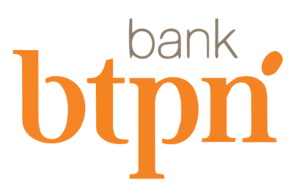
BTPN is a leading commercial bank, headquartered in Jakarta, Indonesia and employs more than 25.000 people. The company offers a wide range of banking services and is particularly focused on the Indonesian mass market. BTPN has been named by Fortune Magazine as one of the top 50 companies changing the world.
After the launch of Jenius in August 2016, BTPN faced a couple of issues that directly affected their main priority: customer experience. “We started with a packaged digital banking solution and spent a couple of thousand man hours in customising it,” says Karim Siregar, CIO at BTPN. ”When going forward, making changes became more difficult and those changes impacted non-related components. This negatively impacted the ability and speed of implementing improvements and developing new features. Both are key to fulfil the wishes of our clients.”
BTPN has to compete in a rapidly changing market. “By being digital, we mean being customer centric,” says Karim. “Speed of change is key to achieve this. It will be hard to increase speed without good quality code (poor code is unstable, hard to change, not scalable etc.).”
“SIG’s analysis of the Jenius rebuild scenario shows that improved code quality will reduce our maintenance cost by an estimated 78% and decrease the time needed to make changes by a factor of 3.”
– Karim Siregar, CIO at BTPN
The SIG consultants delivered value in three key areas:
1. Code Quality Assessment
> Enabled BTPN to make a decision regarding its future roadmap of the Jenius architecture
> Raised quality awareness amongst developers and Senior Management
2. Code Quality Monitoring
> Reduced maintenance costs by 78%
> Increased the speed of change requests by a factor 3
> Increased code quality
> Increased the speed of resolving errors
3. Code Quality Training
> Upskilled developers on producing high quality code
> Facilitated a positive change in culture due to quality awareness=
SIG assessed all the code and showed BTPN where the software met the standard and where improvement was necessary to meet the desired goals. The financial projections of several scenarios that were calculated by SIG showed that a rebuild of the system was the most cost- efficient scenario for BTPN to support its strategy.
BTPN brought the development in-house and set the baseline on a four-star system for the next generation of Jenius. “Clearly, the early version of Jenius was not at that level,” says Karim. “If the quality is not at a four-star level from the start of a new product, and the demands and changes on the product are very high, then the quality deteriorates even further. That’s why we concluded we needed to start over. “SIG’s analysis of the Jenius rebuild scenario shows that improved code quality will reduce our maintenance cost by an estimated 78% and decrease the time needed to make changes by a factor of 3.” To stay on track, SIG monitors the quality level of Jenius enhancements continually. Karim explains, “The ratings are very useful, and the findings substantiate where the rating comes from, i.e. some length of some code is too long.”
“The QSD training didn’t only equip our software engineers with capabilities for writing quality code, but also enhanced their awareness about the importance of non functional requirements.”
– Ariadi Nugroho, Head of IT Strategy and Planning at BTPN
Bringing this project in-house meant BTPN had to select the right people with the right qualifications. Over the past year, about 100 developers were trained in building maintainable software by completing the Quality Software Developer training (QSD). “This training didn’t only provide better coding capabilities, but also in terms of mind-set to the rest of the organization, the importance of quality on non-functional requirements has increased,” says Ariadi Nugroho, Head of IT Strategy and Planning at BTPN.
To embed code quality principles into the BTPN organization, SIG also trained managers to train their teams. “By certifying our developers, we set a certain confidence level,” says Karim. “We equipped them with the competencies they need to do their jobs successfully and to reach our goal.”
BTPN also uses the training as a competitive advantage to attract new talent. “Our company is growing, and we are constantly looking for new talent to realise this growth,” says Karim. “We want to inspire our (future) employees to stretch higher, and this QSD training is a good example of that.”
SIG’s initial task was to help BTPN rate the software quality of Jenius, but its ultimate impact has reached far beyond. SIG has become a trusted partner to advise and support BTPN in the continuous quality monitoring of the Jenius application, while also facilitating a positive cultural change in the organization that helps ensure delivery of quality digital services to the BTPN customer.




Notifications